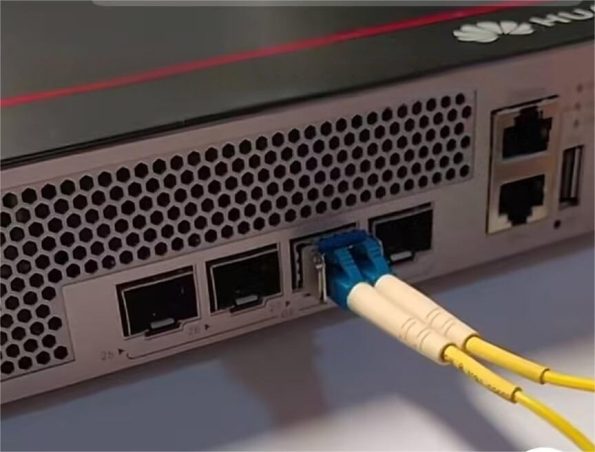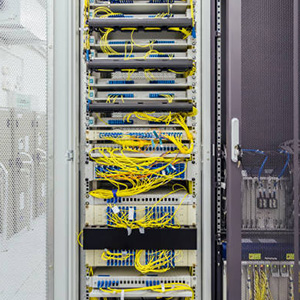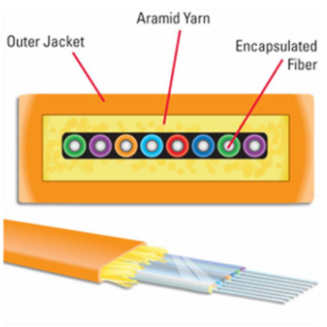In the rapidly advancing world of optical communications, the demand for high-speed, high-performance fiber optic solutions is at an all-time high. Among the various fiber optic products, the SM Simplex LC to LC fiber patch cable stands out due to its simplicity, reliability, and high-performance capabilities. In this blog, we will explore the technical features, advantages, and diverse applications of SM Simplex LC to LC fiber patch cables, focusing on their role in optimizing modern networking infrastructure.
What is an SM Simplex LC to LC Fiber Patch Cable?
An SM Simplex LC to LC fiber patch cable is a type of single-mode (SM) fiber optic cable designed for point-to-point signal transmission. It uses LC connectors on both ends of a single-mode fiber (SMF), with a simplex design meaning it carries a single data stream on one core of the fiber. This setup ensures high-speed, long-distance, and low-loss data transmission, making it ideal for applications where performance and signal integrity are paramount.
The term “simplex” refers to the fact that the fiber carries data in one direction, meaning it can only transmit or receive at any given time. This is in contrast to “duplex” cables, which can handle bidirectional communication.
Key Technical Advantages of SM Simplex LC to LC Fiber Patch Cable
- Single-Mode Fiber: Superior Performance Over Long Distances SM Simplex LC to LC patch cables use single-mode fiber, which has a small core diameter (typically around 8-10 microns) that allows only one light mode to propagate through the fiber. This design minimizes modal dispersion and signal attenuation, making it ideal for long-distance communication. Single-mode fiber can transmit data over tens of kilometers without significant loss in signal quality, which is crucial for applications like backbone networks, inter-data center connections, and high-speed internet.
- Low Attenuation and High Bandwidth One of the major advantages of single-mode fiber is its low attenuation rate, which enables efficient transmission over long distances. The low loss ensures that the transmitted signal remains strong, reducing the need for signal boosters or repeaters in long-distance communication systems. Additionally, single-mode fiber supports high bandwidth transmission, allowing for the rapid transfer of large volumes of data, which is especially important in data centers and high-performance computing environments.
- Compact LC Connectors: Space-Efficient Design The LC connector is a compact, high-density connector type that is widely used in modern fiber optic networks. With its small form factor, the LC connector allows for high-density installations where space is limited. Its push-pull mechanism makes it easy to plug and unplug, offering a simple yet secure connection. This makes it ideal for environments like data centers where efficient use of space is critical.
- Improved Signal Integrity and Reliability SM Simplex LC to LC patch cables are designed with high-precision fiber alignment, ensuring minimal insertion loss and back reflection. This high level of precision minimizes signal degradation and maximizes data transmission efficiency, ensuring the highest level of signal integrity. Moreover, the high reliability of LC connectors ensures a secure connection that withstands frequent insertions and removals, which is essential in environments that require quick setup and reconfiguration.
- Durability and Environmental Resistance SM Simplex LC to LC fiber patch cables are built to withstand tough environments. The outer jacket is typically made of materials like LSZH (Low Smoke Zero Halogen) or PVC, providing resistance to fire, moisture, and temperature fluctuations. These robust materials ensure that the cables can perform reliably even in harsh environments, including industrial, military, and telecommunications applications.
Applications of SM Simplex LC to LC Fiber Patch Cable

- Data Centers and Cloud Networks As data centers expand to meet the demands of cloud computing, the need for high-performance, reliable fiber optic connections has never been greater. SM Simplex LC to LC patch cables are ideal for connecting servers, switches, and routers over long distances within data centers, supporting high-speed data transmission and ensuring that large amounts of data can be moved efficiently between devices. The compact nature of the LC connector also allows for high-density configurations, making them an excellent choice for scaling cloud networks.
- Telecommunication Networks In telecommunication infrastructures, SM Simplex LC to LC fiber patch cables are used to connect various network components, such as optical line terminals (OLTs), optical network units (ONUs), and other network equipment. Their low attenuation and long-distance capabilities are particularly valuable in backhaul networks, where data needs to travel over long distances with minimal signal loss and high reliability.
- High-Performance Computing (HPC) and Supercomputing High-performance computing and supercomputing systems rely on fast data transmission for complex computations. SM Simplex LC to LC patch cables are well-suited for these applications due to their ability to handle high bandwidth and long-distance connections between different parts of the computing system. Whether connecting processing units in an HPC cluster or linking storage devices, these patch cables ensure fast, reliable data exchange.
- Broadcasting and Video Surveillance For broadcasting applications and high-definition video surveillance, fast and uninterrupted signal transmission is crucial. SM Simplex LC to LC fiber patch cables provide the necessary bandwidth and signal integrity for the real-time transmission of video data over long distances. Their ability to maintain signal quality without significant attenuation makes them ideal for professional video and media environments.
- 5G and Fiber-to-the-Home (FTTH) Networks With the rollout of 5G networks and fiber-to-the-home (FTTH) services, there is a growing demand for fiber optic solutions that can support ultra-fast data rates and long-distance communication. SM Simplex LC to LC fiber patch cables are ideal for these networks, offering high-speed connectivity between base stations, optical nodes, and end-users. Their low-loss, high-performance capabilities make them an excellent choice for enabling the high-speed data transmission required in these next-generation networks.
Future Trends and Innovations
As the demand for faster, more reliable networks continues to rise, SM Simplex LC to LC fiber patch cables will likely see innovations in several areas:
- Higher Bandwidth Capacities: With the evolution of technologies such as 400G and 800G optical networks, future SM Simplex LC to LC patch cables may be designed to support even higher bandwidths to accommodate the increasing volume of data being transmitted across networks.
- Smaller Form Factors: As data centers and telecommunications networks become more compact, the demand for smaller, higher-density connectors and cables will increase. New connector designs or more compact fiber types may emerge to meet these needs.
- Enhanced Durability: With the expansion of optical networks into more challenging environments, future cables may incorporate even more advanced materials to enhance durability and resistance to physical stress, temperature extremes, and other environmental factors.
Conclusion
SM Simplex LC to LC fiber patch cables play an essential role in the modern communications landscape, offering unmatched performance for high-speed, long-distance data transmission. Their compact design, low attenuation, high bandwidth capabilities, and reliable connectors make them an excellent choice for a wide range of applications, from data centers and telecommunications to high-performance computing and 5G networks. As technology continues to evolve, SM Simplex LC to LC fiber patch cables will remain a cornerstone of high-performance optical networks, driving the future of global communication infrastructure.











